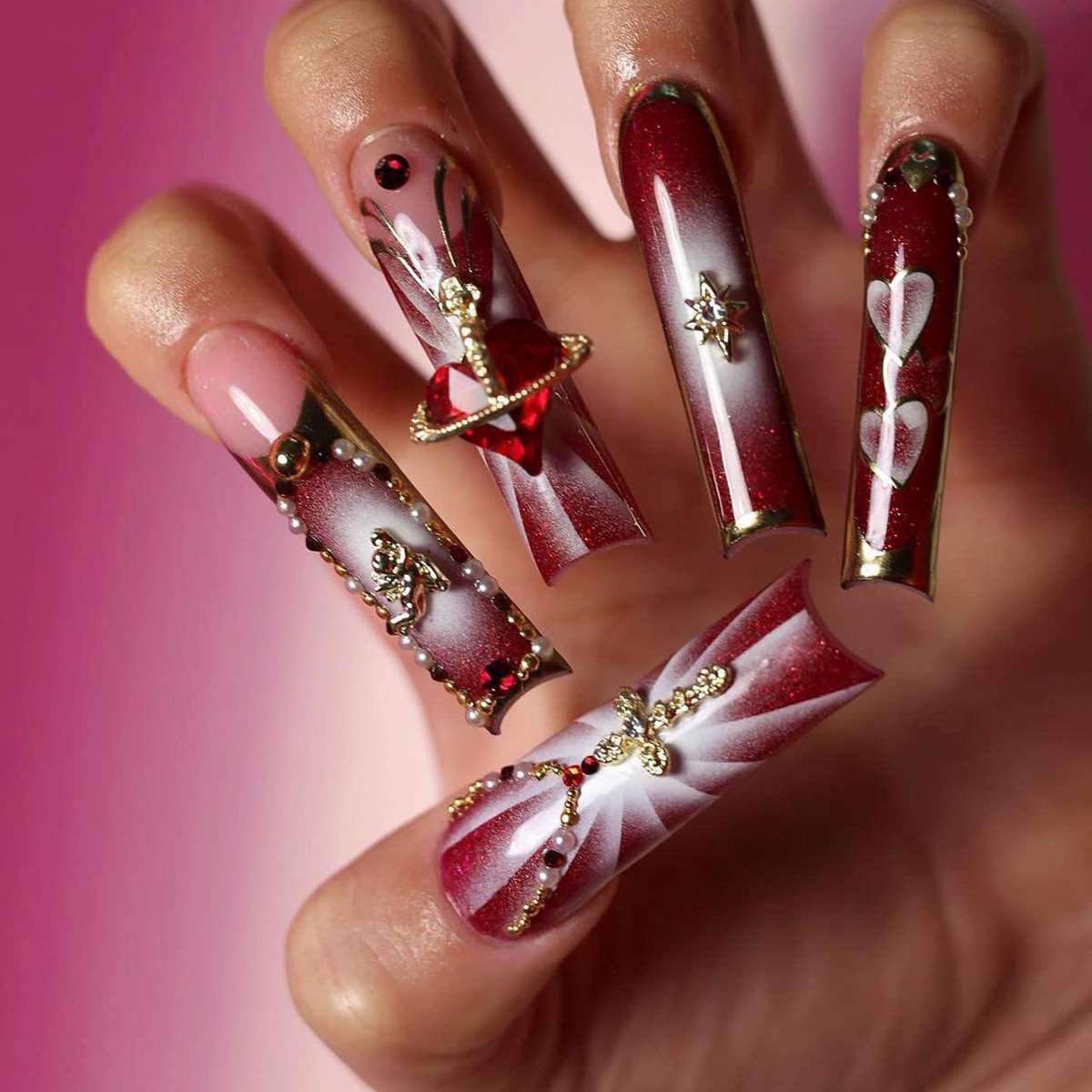Enjoy worldwide free shipping over $69/Buy 3 get 10% off code: gsmbaby
Are press-on nails healthier than nail polish?

Whether press-on nails are healthier than nail polish depends on a few factors, including the quality of the products used, application and removal methods, and personal nail health. Here’s a comparison of the two:
Press-On Nails:
Pros:
Less Chemical Exposure: Press-on nails often involve less direct exposure to chemicals compared to traditional nail polish or gel polish. There’s no need for acetone or other harsh removers, which can dry out or damage nails.
No Drying Time: Press-ons don’t require drying under UV light or exposure to potentially harmful chemicals, which can be part of gel or acrylic manicures.
Easy to Remove: When removed properly, press-ons can be gentler on your nails than gel or acrylic polish. They don’t require soaking in acetone or scraping, which can weaken the nail surface.
Temporary: Press-ons are a good temporary option, allowing your nails to breathe between applications. They can be a healthier alternative for people who want to avoid long-term damage from continuous manicures.
Cons:
Adhesive Issues: The glue used for press-ons can sometimes cause damage if not applied or removed carefully. Strong adhesives might weaken the nail surface over time.
Potential for Trapped Moisture: If not applied properly, moisture can get trapped under the press-ons, potentially leading to fungal infections.
Nail Polish:
Pros:
Variety: Nail polish offers a wide range of colors and finishes and is easily customizable with designs and nail art.
Breathability: Some traditional nail polishes are water-permeable, allowing nails to “breathe,” which some people believe is healthier for the nails.
Gentle Removal (Non-Gel): Regular nail polish can be removed with non-acetone removers, which are gentler on the nails than the process of removing gel polish or press-ons.
Cons:
Chemical Exposure: Nail polish, especially traditional and gel varieties, contains chemicals like formaldehyde, toluene, and dibutyl phthalate (DBP), which can be harsh on nails and skin.
Nail Drying: Frequent use of nail polish, especially with acetone removers, can dry out nails, making them more prone to peeling and breaking.
UV Exposure: Gel manicures require curing under UV light, which can pose a risk of skin damage over time.
Conclusion:
- Healthier Option: If you’re looking for a temporary and low-chemical option, press-on nails might be the healthier choice, especially if you use gentle adhesives and remove them properly.
- Customization and Convenience: Nail polish, particularly non-gel formulas, offers more variety and can be gentler if you’re careful about the products you choose and how often you use them.
Both options can be part of a healthy nail care routine if used in moderation and with proper care. The best choice depends on your personal preferences, nail health, and lifestyle